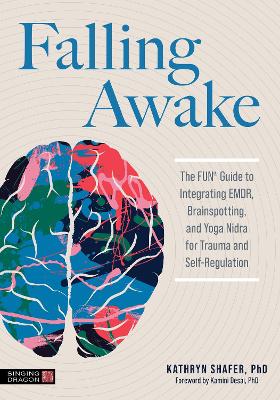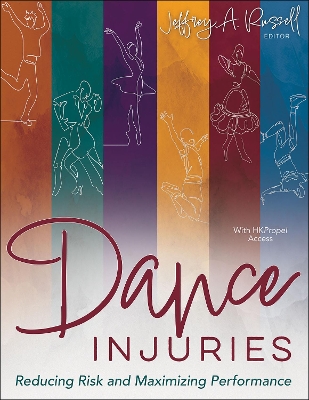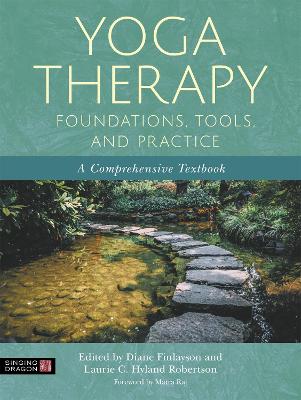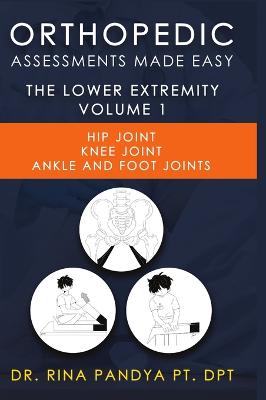Intention and Non-Doing in Therapeutic Bodywork
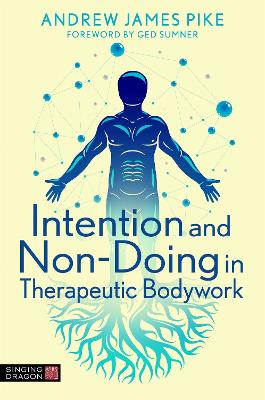 portes grátis
portes grátis
Intention and Non-Doing in Therapeutic Bodywork
Pike, Andrew
Jessica Kingsley Publishers
09/2021
272
Mole
Inglês
9781787758988
15 a 20 dias
380
Descrição não disponível.
List of Figures 6
List of Experiential Exercises 8
Acknowledgements 9
Forward 11
Preface 12
1. Wholistic Awareness 16
1.1 The dot 17
1.2 The movie 20
2. Feeling Safe 22
2.1 Setting scene to notice screen 23
2.2 Familiarity with space and stillness 30
3. Intention 38
3.1 Ramifications of intent 39
3.2 Intention prevents insight 40
3.3 Types of intent 45
4. TIME Passing 66
4.1 T.I/ME 67
4.2 Noticing 69
Sensory input 69
Impressions (arising) 69
Sensations (A+P) 70
Tendencies (A>P) 70
Intention 71
4.3 Change 73
4.4 Arising & Passing 76
4.5 Equanimity 78
4.6 Ice, liquid, steam 80
5. Entering Stillness 82
5.1 No permanent separate self 83
5.2 Simple, complex & non-dual simple 84
5.4 Accessing original nature 86
5.5 Calm Intensity 87
5.6 Beyond the Placebo 90
6. Calm In-10-City 92
6.1 The 10 qualities of the city with no gate 93
Qualities of calm-in-ten-city: 93
6.2 Non-doing V's progressive approach 96
7. Access Attention 100
7.1 Access Attention Anchoring 101
7.2 Philtrum 104
7.3 Breath-fast, Lung-ch & Su-purrr 105
7.5 Cranial nerve balance 107
7.6 Quantum sense awareness 108
7.7 Access to natural fulcrum expression 109
8. Insight Field 114
8.1 It is 'This' 115
8.2 Present in all fields 115
8.3 Felt-sense entanglement 117
8.4 Quintessential realisation 121
8.5 Seeing patterns with embodied non-doing 126
8.6 Five factors to SPEND T.I/ME 127
9. Equanimity & the Grey Zone 129
9.1 The importance of equanimity 130
9.2 Distraction 130
9.3 Tides of tantalisation 131
9.4 Good/Bad 'energy' trap 136
9.5 Potency awareness v energy manipulation 137
9.6 Insight, the distinction between calm intensity and dissociation 137
10. Engaged Non-Doing 140
10.1 E.N.D principles 141
10.2 Dissolution of T.I/ME 144
10.3 J Krishnamurti 148
10.4 Insight primed primal-midline 152
10.5 Warrior wu wei v wimpy wistfulness 155
10.6 Subatomic & Molecular touch (MT) 156
10.7 Four chambers of non-doing orientation 158
10.8 Felt-sense connection 160
10.9 This Is 162
10.10 Socially-reactive v pro-relational 166
10.11 Client Resourcing 167
11. The Doing Client 169
11.1 Falconer & falcon 170
11.2 Controlling the Breath 171
11.3 Moving the body 171
11.4 Subconscious tension 172
11.5 Asking therapist to 'focus' on specific areas 173
11.6 Asking therapist for a wide perceptual field 174
(rare in client settings but common in undergraduate student settings) 174
11.7 Talking to distract from deepening 174
11.8 Client transference 175
11.9 Projecting the Therapist as a Guru 177
11.10 Trauma 178
12. Client oriented END process 182
12.1 Cranioga 183
Process of intention to attention to non-doing 183
12.2 Cranioga process in a nutshell 196
13. Brahma Vihara 200
13.1 Insight born love v conjured love 201
13.2 Metta (loving appreciation) 202
13.3 Karuna (compassion) 205
13.4 Mudita (altruistic joy) 205
13.5 Upekkha (equanimity) 208
13.6 Tonglen 209
13.7 Altruism 209
Appendix 1: Process of bottom-up conditioning 212
Appendix 2 213
Glossary 220
References 263
E.N.D Notes 267
List of Experiential Exercises 8
Acknowledgements 9
Forward 11
Preface 12
1. Wholistic Awareness 16
1.1 The dot 17
1.2 The movie 20
2. Feeling Safe 22
2.1 Setting scene to notice screen 23
2.2 Familiarity with space and stillness 30
3. Intention 38
3.1 Ramifications of intent 39
3.2 Intention prevents insight 40
3.3 Types of intent 45
4. TIME Passing 66
4.1 T.I/ME 67
4.2 Noticing 69
Sensory input 69
Impressions (arising) 69
Sensations (A+P) 70
Tendencies (A>P) 70
Intention 71
4.3 Change 73
4.4 Arising & Passing 76
4.5 Equanimity 78
4.6 Ice, liquid, steam 80
5. Entering Stillness 82
5.1 No permanent separate self 83
5.2 Simple, complex & non-dual simple 84
5.4 Accessing original nature 86
5.5 Calm Intensity 87
5.6 Beyond the Placebo 90
6. Calm In-10-City 92
6.1 The 10 qualities of the city with no gate 93
Qualities of calm-in-ten-city: 93
6.2 Non-doing V's progressive approach 96
7. Access Attention 100
7.1 Access Attention Anchoring 101
7.2 Philtrum 104
7.3 Breath-fast, Lung-ch & Su-purrr 105
7.5 Cranial nerve balance 107
7.6 Quantum sense awareness 108
7.7 Access to natural fulcrum expression 109
8. Insight Field 114
8.1 It is 'This' 115
8.2 Present in all fields 115
8.3 Felt-sense entanglement 117
8.4 Quintessential realisation 121
8.5 Seeing patterns with embodied non-doing 126
8.6 Five factors to SPEND T.I/ME 127
9. Equanimity & the Grey Zone 129
9.1 The importance of equanimity 130
9.2 Distraction 130
9.3 Tides of tantalisation 131
9.4 Good/Bad 'energy' trap 136
9.5 Potency awareness v energy manipulation 137
9.6 Insight, the distinction between calm intensity and dissociation 137
10. Engaged Non-Doing 140
10.1 E.N.D principles 141
10.2 Dissolution of T.I/ME 144
10.3 J Krishnamurti 148
10.4 Insight primed primal-midline 152
10.5 Warrior wu wei v wimpy wistfulness 155
10.6 Subatomic & Molecular touch (MT) 156
10.7 Four chambers of non-doing orientation 158
10.8 Felt-sense connection 160
10.9 This Is 162
10.10 Socially-reactive v pro-relational 166
10.11 Client Resourcing 167
11. The Doing Client 169
11.1 Falconer & falcon 170
11.2 Controlling the Breath 171
11.3 Moving the body 171
11.4 Subconscious tension 172
11.5 Asking therapist to 'focus' on specific areas 173
11.6 Asking therapist for a wide perceptual field 174
(rare in client settings but common in undergraduate student settings) 174
11.7 Talking to distract from deepening 174
11.8 Client transference 175
11.9 Projecting the Therapist as a Guru 177
11.10 Trauma 178
12. Client oriented END process 182
12.1 Cranioga 183
Process of intention to attention to non-doing 183
12.2 Cranioga process in a nutshell 196
13. Brahma Vihara 200
13.1 Insight born love v conjured love 201
13.2 Metta (loving appreciation) 202
13.3 Karuna (compassion) 205
13.4 Mudita (altruistic joy) 205
13.5 Upekkha (equanimity) 208
13.6 Tonglen 209
13.7 Altruism 209
Appendix 1: Process of bottom-up conditioning 212
Appendix 2 213
Glossary 220
References 263
E.N.D Notes 267
Este título pertence ao(s) assunto(s) indicados(s). Para ver outros títulos clique no assunto desejado.
Bodywork; Therapy; Safe touch; Non-intention; Healing; Yoga; Physiotherapy; Massage therapy; Chiropractic care; Intention; Therapeutic Bodywork
List of Figures 6
List of Experiential Exercises 8
Acknowledgements 9
Forward 11
Preface 12
1. Wholistic Awareness 16
1.1 The dot 17
1.2 The movie 20
2. Feeling Safe 22
2.1 Setting scene to notice screen 23
2.2 Familiarity with space and stillness 30
3. Intention 38
3.1 Ramifications of intent 39
3.2 Intention prevents insight 40
3.3 Types of intent 45
4. TIME Passing 66
4.1 T.I/ME 67
4.2 Noticing 69
Sensory input 69
Impressions (arising) 69
Sensations (A+P) 70
Tendencies (A>P) 70
Intention 71
4.3 Change 73
4.4 Arising & Passing 76
4.5 Equanimity 78
4.6 Ice, liquid, steam 80
5. Entering Stillness 82
5.1 No permanent separate self 83
5.2 Simple, complex & non-dual simple 84
5.4 Accessing original nature 86
5.5 Calm Intensity 87
5.6 Beyond the Placebo 90
6. Calm In-10-City 92
6.1 The 10 qualities of the city with no gate 93
Qualities of calm-in-ten-city: 93
6.2 Non-doing V's progressive approach 96
7. Access Attention 100
7.1 Access Attention Anchoring 101
7.2 Philtrum 104
7.3 Breath-fast, Lung-ch & Su-purrr 105
7.5 Cranial nerve balance 107
7.6 Quantum sense awareness 108
7.7 Access to natural fulcrum expression 109
8. Insight Field 114
8.1 It is 'This' 115
8.2 Present in all fields 115
8.3 Felt-sense entanglement 117
8.4 Quintessential realisation 121
8.5 Seeing patterns with embodied non-doing 126
8.6 Five factors to SPEND T.I/ME 127
9. Equanimity & the Grey Zone 129
9.1 The importance of equanimity 130
9.2 Distraction 130
9.3 Tides of tantalisation 131
9.4 Good/Bad 'energy' trap 136
9.5 Potency awareness v energy manipulation 137
9.6 Insight, the distinction between calm intensity and dissociation 137
10. Engaged Non-Doing 140
10.1 E.N.D principles 141
10.2 Dissolution of T.I/ME 144
10.3 J Krishnamurti 148
10.4 Insight primed primal-midline 152
10.5 Warrior wu wei v wimpy wistfulness 155
10.6 Subatomic & Molecular touch (MT) 156
10.7 Four chambers of non-doing orientation 158
10.8 Felt-sense connection 160
10.9 This Is 162
10.10 Socially-reactive v pro-relational 166
10.11 Client Resourcing 167
11. The Doing Client 169
11.1 Falconer & falcon 170
11.2 Controlling the Breath 171
11.3 Moving the body 171
11.4 Subconscious tension 172
11.5 Asking therapist to 'focus' on specific areas 173
11.6 Asking therapist for a wide perceptual field 174
(rare in client settings but common in undergraduate student settings) 174
11.7 Talking to distract from deepening 174
11.8 Client transference 175
11.9 Projecting the Therapist as a Guru 177
11.10 Trauma 178
12. Client oriented END process 182
12.1 Cranioga 183
Process of intention to attention to non-doing 183
12.2 Cranioga process in a nutshell 196
13. Brahma Vihara 200
13.1 Insight born love v conjured love 201
13.2 Metta (loving appreciation) 202
13.3 Karuna (compassion) 205
13.4 Mudita (altruistic joy) 205
13.5 Upekkha (equanimity) 208
13.6 Tonglen 209
13.7 Altruism 209
Appendix 1: Process of bottom-up conditioning 212
Appendix 2 213
Glossary 220
References 263
E.N.D Notes 267
List of Experiential Exercises 8
Acknowledgements 9
Forward 11
Preface 12
1. Wholistic Awareness 16
1.1 The dot 17
1.2 The movie 20
2. Feeling Safe 22
2.1 Setting scene to notice screen 23
2.2 Familiarity with space and stillness 30
3. Intention 38
3.1 Ramifications of intent 39
3.2 Intention prevents insight 40
3.3 Types of intent 45
4. TIME Passing 66
4.1 T.I/ME 67
4.2 Noticing 69
Sensory input 69
Impressions (arising) 69
Sensations (A+P) 70
Tendencies (A>P) 70
Intention 71
4.3 Change 73
4.4 Arising & Passing 76
4.5 Equanimity 78
4.6 Ice, liquid, steam 80
5. Entering Stillness 82
5.1 No permanent separate self 83
5.2 Simple, complex & non-dual simple 84
5.4 Accessing original nature 86
5.5 Calm Intensity 87
5.6 Beyond the Placebo 90
6. Calm In-10-City 92
6.1 The 10 qualities of the city with no gate 93
Qualities of calm-in-ten-city: 93
6.2 Non-doing V's progressive approach 96
7. Access Attention 100
7.1 Access Attention Anchoring 101
7.2 Philtrum 104
7.3 Breath-fast, Lung-ch & Su-purrr 105
7.5 Cranial nerve balance 107
7.6 Quantum sense awareness 108
7.7 Access to natural fulcrum expression 109
8. Insight Field 114
8.1 It is 'This' 115
8.2 Present in all fields 115
8.3 Felt-sense entanglement 117
8.4 Quintessential realisation 121
8.5 Seeing patterns with embodied non-doing 126
8.6 Five factors to SPEND T.I/ME 127
9. Equanimity & the Grey Zone 129
9.1 The importance of equanimity 130
9.2 Distraction 130
9.3 Tides of tantalisation 131
9.4 Good/Bad 'energy' trap 136
9.5 Potency awareness v energy manipulation 137
9.6 Insight, the distinction between calm intensity and dissociation 137
10. Engaged Non-Doing 140
10.1 E.N.D principles 141
10.2 Dissolution of T.I/ME 144
10.3 J Krishnamurti 148
10.4 Insight primed primal-midline 152
10.5 Warrior wu wei v wimpy wistfulness 155
10.6 Subatomic & Molecular touch (MT) 156
10.7 Four chambers of non-doing orientation 158
10.8 Felt-sense connection 160
10.9 This Is 162
10.10 Socially-reactive v pro-relational 166
10.11 Client Resourcing 167
11. The Doing Client 169
11.1 Falconer & falcon 170
11.2 Controlling the Breath 171
11.3 Moving the body 171
11.4 Subconscious tension 172
11.5 Asking therapist to 'focus' on specific areas 173
11.6 Asking therapist for a wide perceptual field 174
(rare in client settings but common in undergraduate student settings) 174
11.7 Talking to distract from deepening 174
11.8 Client transference 175
11.9 Projecting the Therapist as a Guru 177
11.10 Trauma 178
12. Client oriented END process 182
12.1 Cranioga 183
Process of intention to attention to non-doing 183
12.2 Cranioga process in a nutshell 196
13. Brahma Vihara 200
13.1 Insight born love v conjured love 201
13.2 Metta (loving appreciation) 202
13.3 Karuna (compassion) 205
13.4 Mudita (altruistic joy) 205
13.5 Upekkha (equanimity) 208
13.6 Tonglen 209
13.7 Altruism 209
Appendix 1: Process of bottom-up conditioning 212
Appendix 2 213
Glossary 220
References 263
E.N.D Notes 267
Este título pertence ao(s) assunto(s) indicados(s). Para ver outros títulos clique no assunto desejado.

